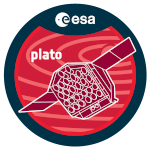Space-based photometry is an extremely powerful observing method in order to measure surface rotation of large samples of main-sequence solar-type stars. PLATO will provide, for bright stars, years-long continuous light curves of exquisite quality which should allow characterisation of surface rotation in tens of thousands of stars. In this talk, I will present the rotation and activity analysis module of the PLATO stellar analysis system (SAS), which combines Fourier analysis, autocorrelation of time series and machine learning methodologies to measure both stellar surface rotation and long-term modulations related to stellar magnetic activity. In particular, I will explain how the ROOSTER random forest methodology guarantees the completeness and the robustness of the automated analysis of rotation in the SAS. In order to underline this efficiency, I will present the results of the first tests performed on a Kepler reference data set and PLATO simulated light curves. Finally, I will point out how combining these measurements with asteroseismic inference will enable us to draw an unprecedented dynamical picture of the stars observed by PLATO. This will improve our understanding of the evolution of the angular momentum of late-type stars and of their planetary systems.
|
|
|
Abstracts > sorted by Authors > Lanza Antonino F.Measuring stellar rotation and activity with PLATO
1 : INAF - Osservatorio Astrofisico di Catania
2 : IAS Orsay
Université Paris Saclay
3 : ISTA Vienna
4 : Astrophysique Interprétation Modélisation
Commissariat à l'énergie atomique et aux énergies alternatives, Institut National des Sciences de l'Univers, Université Paris-Saclay, Centre National de la Recherche Scientifique, Université Paris Cité, Commissariat à l'énergie atomique et aux énergies alternatives : UMR_E_9005, Centre National de la Recherche Scientifique : UMR_7158, Université Paris Cité : UMR_7158
5 : Instituto de Astrofisica de Canarias
|

 PDF version
PDF version
